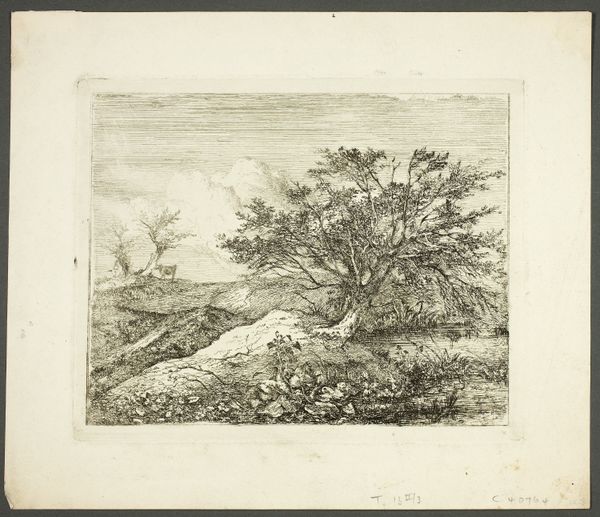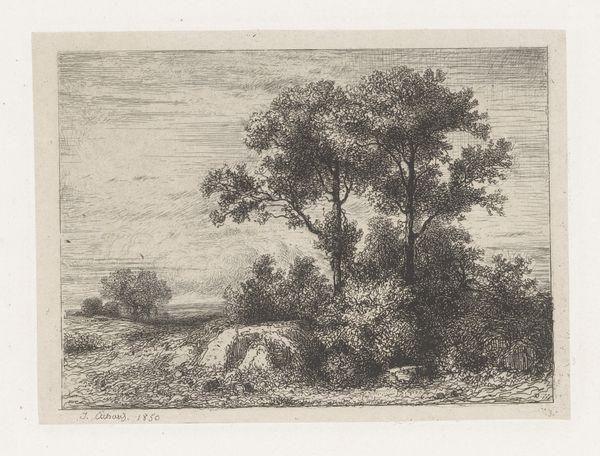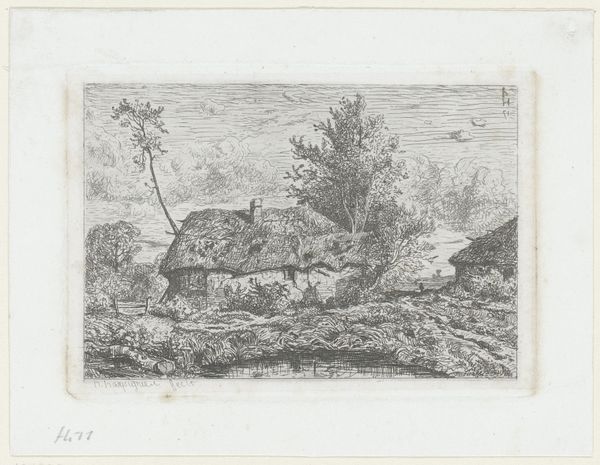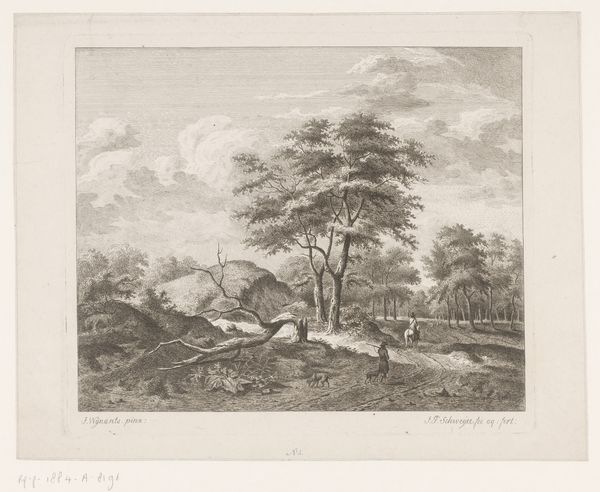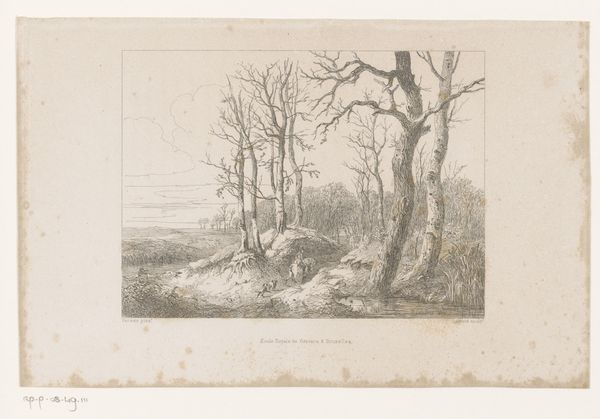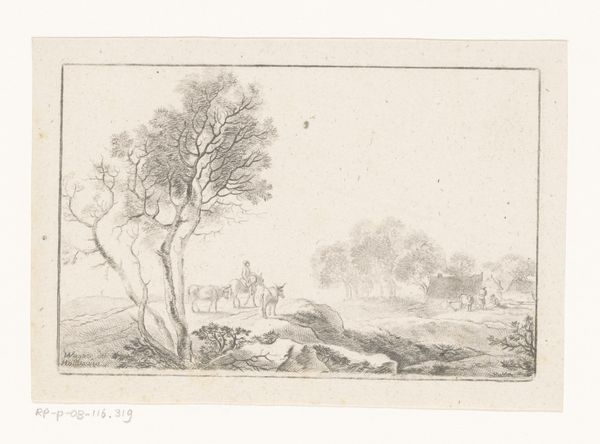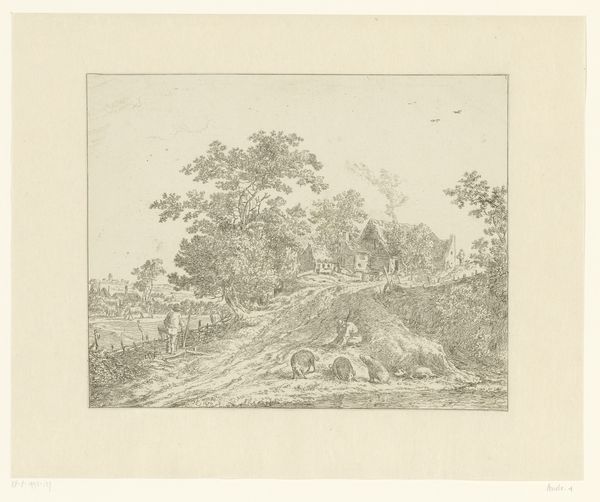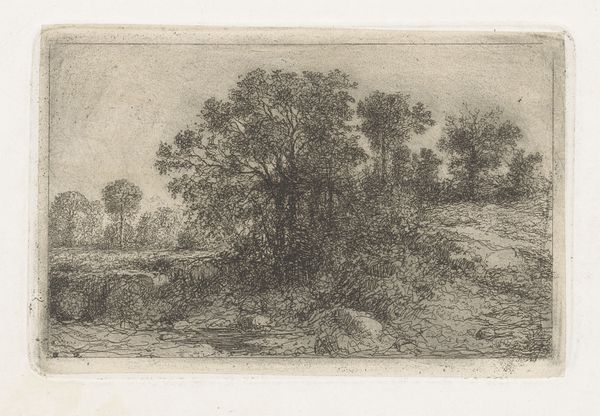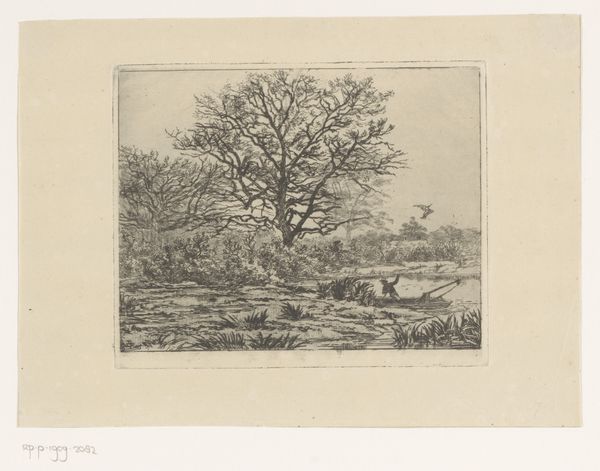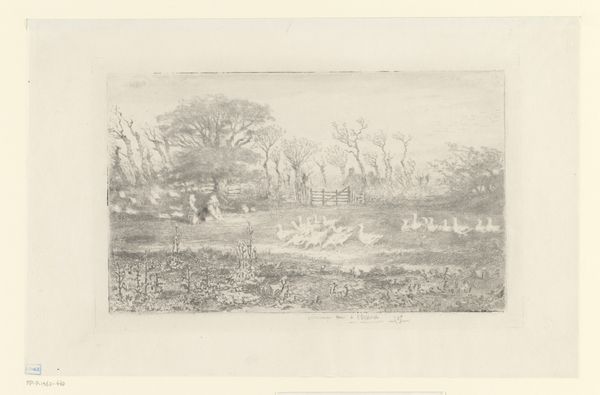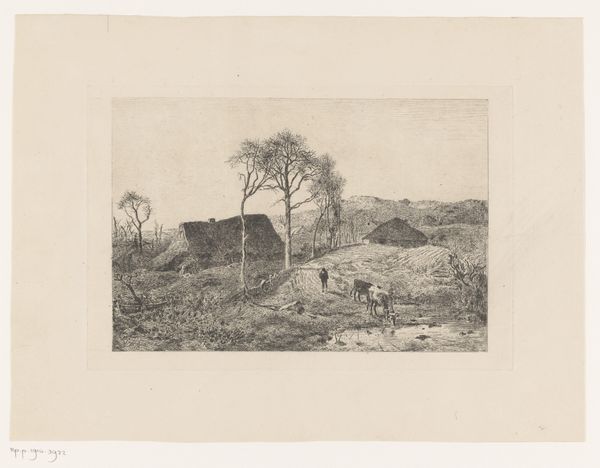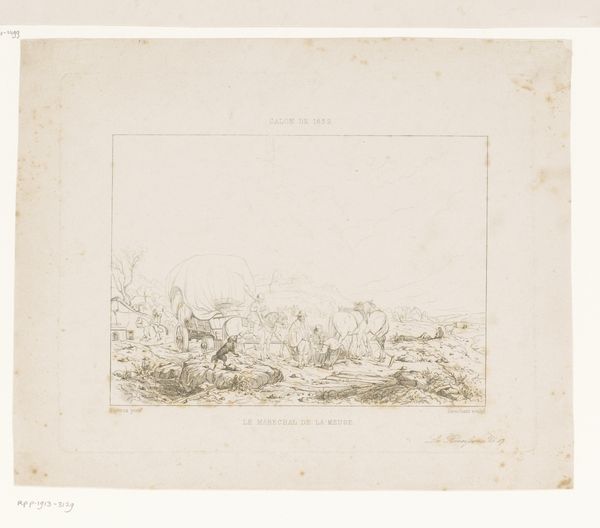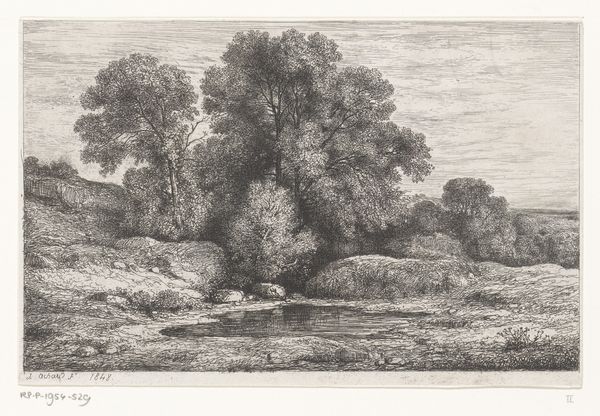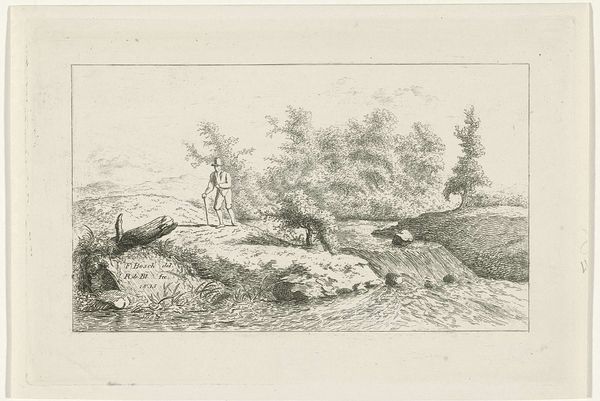
drawing, print, etching
#
drawing
#
16_19th-century
# print
#
etching
#
pencil sketch
#
landscape
#
romanticism
#
realism
Dimensions: height 130 mm, width 191 mm
Copyright: Rijks Museum: Open Domain
Editor: Right now we are looking at "Landschap met boerenwoningen," or "Landscape with Farmhouses," an etching made in 1848 by Henri-Joseph Harpignies, and currently held at the Rijksmuseum. There’s almost a ghostly quality to the details in the farmhouses and foliage, and I am curious to understand its nuances a bit more. What do you see in this piece from a historical perspective? Curator: Well, this seemingly tranquil landscape is steeped in the social and political anxieties of its time. Harpignies created this in 1848, a year of widespread revolutions across Europe. Do you notice anything about what is included – and crucially, *not* included – in the landscape? Editor: It does seem idyllic, focusing on the simplicity of rural life, almost ignoring everything else. I see houses, trees, and open fields. Curator: Exactly. Harpignies, consciously or not, presents a carefully constructed image of rural stability during a period of intense social upheaval. It omits any direct reference to the burgeoning industrialization, the poverty of urban centers, or the revolutionary fervor sweeping across France. Isn't it interesting how art often reflects an escape from, or even a denial of, the realities of its day? How might the art market, and the patrons who supported artists, have played a role in shaping these kinds of landscape depictions? Editor: So, maybe the beauty isn't just about nature. It’s a form of… wishful thinking? It makes me consider how artistic representations often sidestep certain truths while highlighting others, influenced by the prevailing ideologies and the tastes of those in power. Thanks! Curator: Precisely. And hopefully it underscores how landscapes can act as both mirrors and subtle acts of cultural negotiation, reflecting the ideals and anxieties of their historical context.
Comments
No comments
Be the first to comment and join the conversation on the ultimate creative platform.
